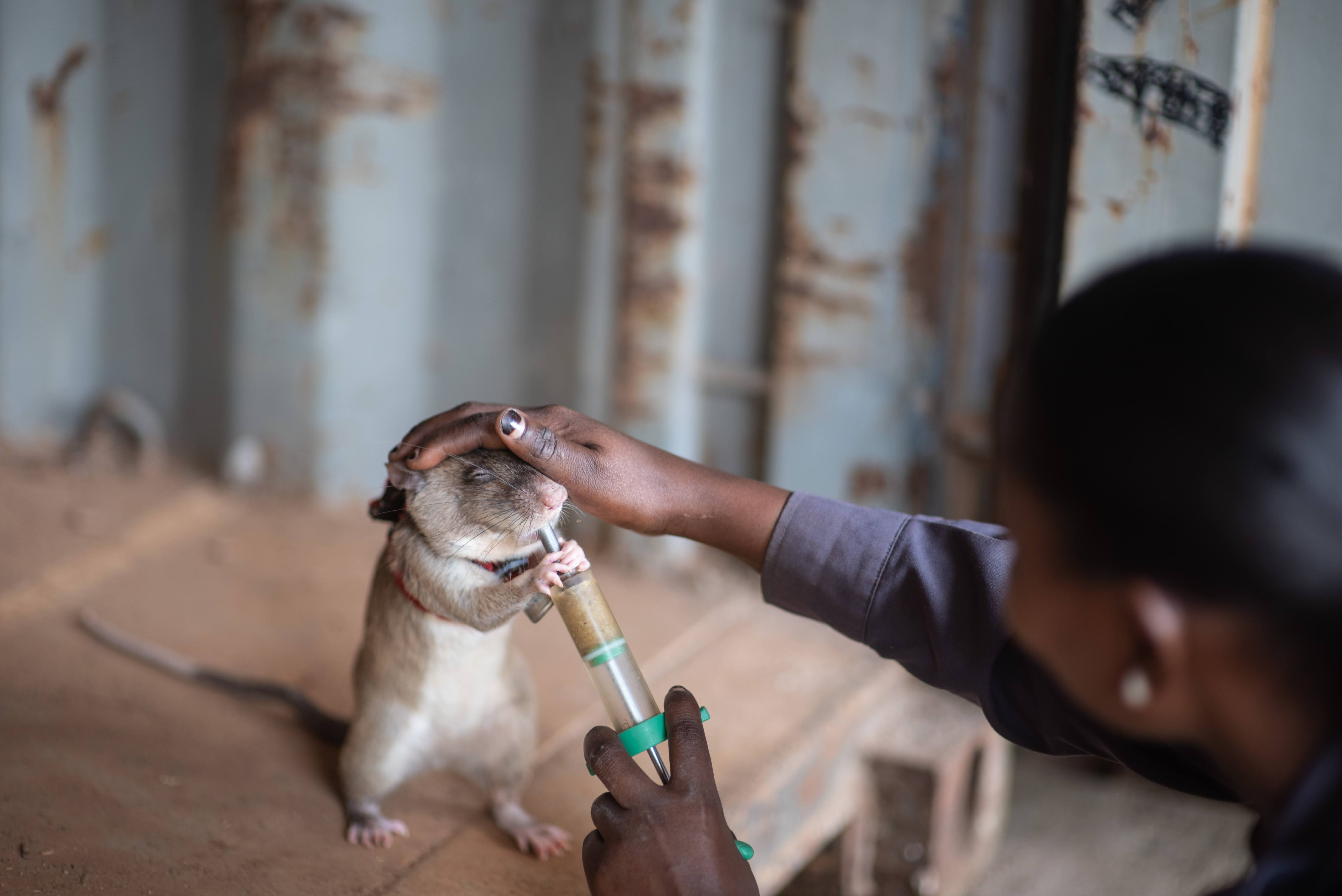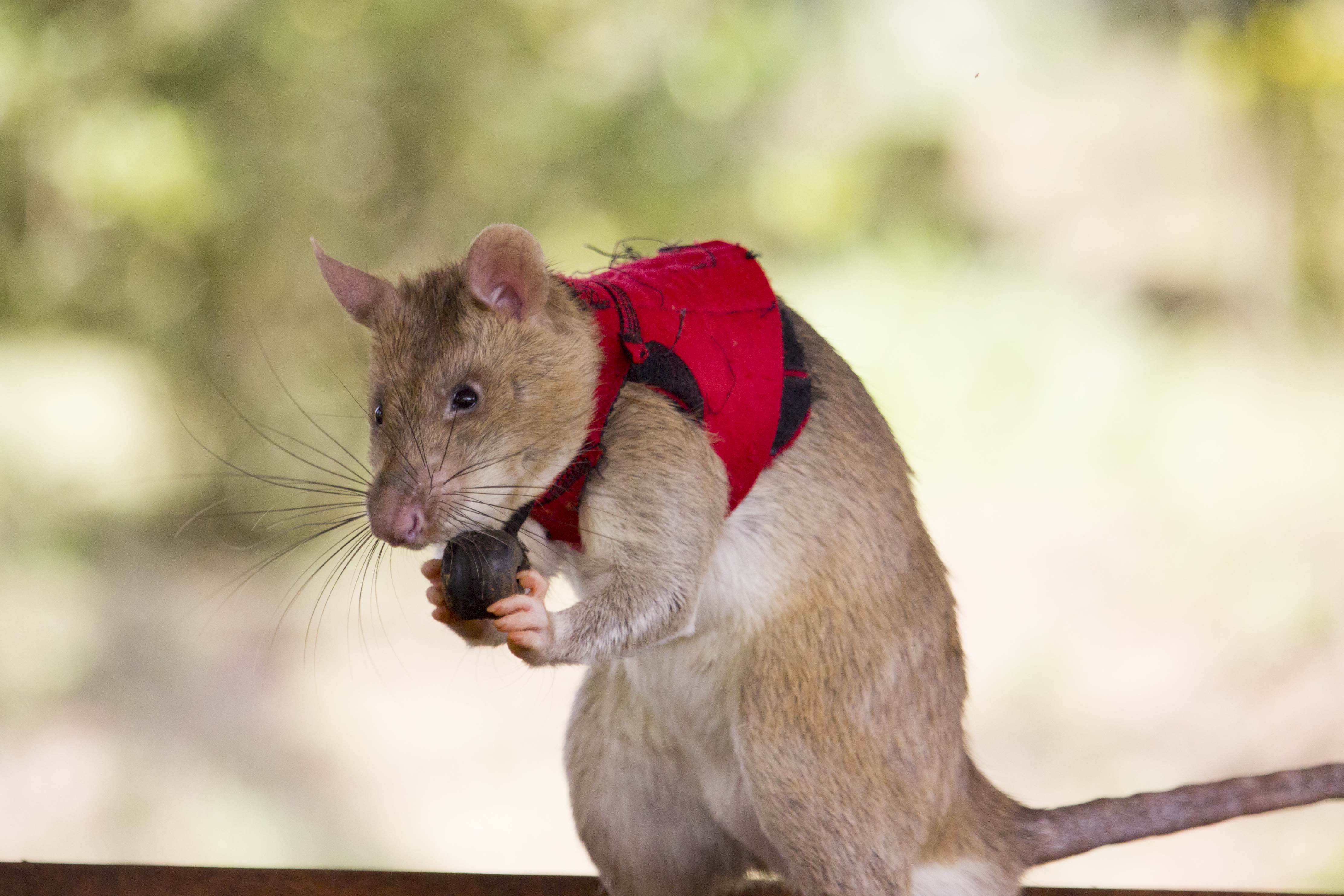Forget fictional Rodents of Unusual Size – for wildlife traffickers, there are real life giant rats to be feared, after researchers successfully trained African giant pouched rats to pick up the scent of illegally traded animal parts.
The black market for illegal wildlife products is a serious global problem. While authorities and scientists have been trialing all kinds of methods to stop trafficking in its tracks, many are inefficient, costly, or a long way off deployment.
Scent-detection animals, however, could be one of the most promising solutions and an international team of researchers has turned to the African giant pouched rat (Cricetomys ansorgei) in particular.
These rats have an impressive sense of smell, able to detect many different scents and tell the difference between them – not to mention they can get into tight spaces. They’ve previously been trained to sniff out explosives, and even tuberculosis-causing bacteria. Could they do the same with illegally trafficked wildlife?
The answer is yes; the researchers were able to train rats to pick up on the scent of elephant ivory, rhino horn, African blackwood, and pangolin scales, the latter being the world’s most trafficked mammal.
Training the rats to become detection experts was no small task. The 11 rats involved first had to learn how to hold their noses near a target scent for several seconds, followed by learning the difference between target and non-target scents; traffickers often use things like coffee beans and washing powder to throw detectors off.

The rats were given a tasty treat when they got something right.
Image credit: APOPO
The rats also needed to be able to remember the target scents – even after five and eight months of not being exposed to them, the rats were able to pick the target scents up.
At the end of the training, eight of the rats had become top-tier detectors, able to identify all four of the target species’ scents and do so among 146 non-targets.
While successful, it’s important to note that this was a proof-of-concept study that took place within a controlled environment – what works within a lab setting might not necessarily work in the field. The team also says that further research needs to be done that tests the rats with different specimens from a species, and different concentrations of those specimens.
That being said, the team have already started preparing for a time when the rats could be deployed in a real-life setting, by fitting them with some functional – and adorably small – vests.

Fashionable AND functional.
Image credit: APOPO
The vests feature a small ball attached to the chest that, when pulled, triggers a beeping sound. Rats will be trained to pull the ball when they detect a target scent, with the sound alerting handlers to their find.
“The vests are a great example of developing hardware that could be useful across different settings and tasks, including at a shipping port to detect smuggled wildlife,” said Dr Kate Webb, co-first author of the training study, in a statement.
The study is published in Frontiers in Conservation Science.
Source Link: Giant Rats In Tiny Vests Trained To Sniff Out Illegally Trafficked Wildlife